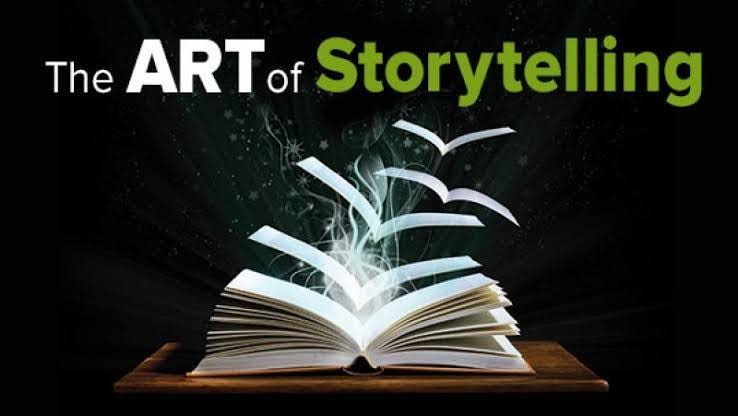Storytelling is one of the oldest and strongest ways to communicate. It is a universal language that connects people through shared feelings, experiences, and ideas. By July 2025, storytelling is even more important, especially as digital content fills our screens and attention spans get shorter. Whether you are a writer, marketer, teacher, or speaker, being able to tell a good story can make your message stand out and be remembered. Great storytelling doesn’t happen by chance—it needs structure, emotion, honesty, and purpose. Learning to use these parts well can turn simple information into a memorable experience.
Understand the Core of Every Great Story
Every compelling story begins with a solid foundation. At its core, a story usually revolves around a character, a conflict, and a resolution. These three elements—often referred to as the narrative arc—form the spine of nearly every successful tale. Without a central character to follow, audiences have nothing to connect with. Without conflict, there’s no tension to maintain interest. And without a resolution, there’s no sense of closure or takeaway.
Characters must be relatable. This doesn’t mean they have to be perfect or even likable, but they must evoke empathy. Readers or listeners should see parts of themselves or people they know in the character’s journey. Whether it’s a small business owner striving to succeed or a hero saving their world, the emotional connection is key.
The conflict, or challenge, is what drives the story forward. It can be internal, external, or both. Conflict injects momentum into the narrative, prompting the character to evolve. Finally, a satisfying resolution—whether it’s a triumph, failure, or lesson learned—leaves the audience with something to think about. Even in modern branding or personal stories, this simple arc remains the most effective storytelling framework.
Hook Your Audience From the Beginning
In a world full of distractions, the first few lines of your story are critical. A strong hook immediately grabs the audience’s attention and gives them a reason to keep listening, reading, or watching. The opening must be intriguing, emotionally charged, or provoke curiosity. It might begin in the middle of the action, pose a thought-provoking question, or hint at an unresolved tension.
Writers often start with a vivid scene, a startling statistic, or a memorable quote to draw readers in. Storytellers in business or media may start by identifying a relatable problem or surprising insight. Whatever form it takes, the hook should set the tone for the story and suggest what’s at stake.
In July 2025, digital creators are also adapting their hooks for visual formats. In video content or social media storytelling, the first 3–5 seconds often determine whether the audience stays or scrolls. That’s why compelling visuals, strong emotions, and clear value are often delivered upfront to engage audiences quickly.
Use Emotion to Build Connection
Emotion is the heart of storytelling. It transforms facts into meaning and turns passive audiences into engaged participants. A well-crafted narrative doesn’t just inform—it makes people feel. Whether it’s joy, sadness, fear, hope, or anger, evoking emotion creates a deep, lasting impact.
To do this effectively, storytellers need to understand their audience. What matters to them? What are their dreams, fears, or pain points? By addressing these emotions through a character’s journey, storytellers can create moments of shared vulnerability or triumph that stick long after the story ends.
As of 2025, successful brands, political movements, and advocacy campaigns often leverage emotional storytelling to inspire action. Stories that celebrate resilience, highlight injustice, or express personal transformation tend to resonate the most. Authenticity is essential—audiences can sense when emotion is manufactured, so the storyteller must truly believe in the message they’re sharing.
Structure the Story for Maximum Impact
Even the most emotional or creative story needs structure to be effective. A strong narrative typically follows a beginning, middle, and end—but the details within that structure are what guide the audience through the experience. The beginning sets the stage, introduces characters, and builds context. The middle presents the conflict, complications, and turning points. The end provides the climax and resolution.
In modern storytelling, non-linear structures are also popular. Flashbacks, parallel timelines, and reverse storytelling can add complexity and intrigue when done with intention. However, even unconventional structures need a logical flow that leads the audience somewhere meaningful.
Clarity is vital. If a story becomes too convoluted or abstract, the audience may lose interest. Good storytelling should lead the audience from one idea to the next without confusion, each moment building on the last to create emotional and intellectual momentum.
Show, Don’t Just Tell
One of the golden rules of storytelling is to show rather than tell. This means painting vivid scenes and allowing the audience to experience the story through action, dialogue, and sensory detail, rather than just summarizing events or explaining emotions.
Instead of saying a character was afraid, describe how their hands trembled, how their breath shortened, or how they glanced over their shoulder with every step. These details pull readers or listeners into the story, making them feel like part of the world rather than passive observers.
In 2025, even in data-driven environments like journalism or business presentations, storytellers use anecdotes, case studies, and visuals to “show” their point. This technique helps make abstract ideas more concrete and memorable, especially in complex or technical narratives.
Adapt Your Story to the Medium
Different platforms require different storytelling approaches. A story that works well in a novel may not have the same impact in a podcast, short film, or social media post. Today’s storytellers must be adaptable, considering format, audience expectations, and context when crafting their narrative.
For instance, Instagram stories and TikTok videos prioritize brevity and visual storytelling, while podcasts allow for slower, more layered narratives. Long-form essays provide space for detailed analysis, while presentation decks demand clarity and succinct messaging.
By July 2025, cross-platform storytelling has become more common, with creators developing stories that unfold across multiple media—starting on social media, continuing in a newsletter, and culminating in a live event or video series. This omni-channel approach allows stories to reach wider audiences while maintaining coherence.
End with Meaning and Purpose
How a story ends can determine how it is remembered. A compelling conclusion doesn’t just tie up loose ends—it offers a takeaway, a reflection, or a call to action. Whether the ending is uplifting, tragic, or ambiguous, it should leave the audience thinking or feeling something significant.
The most powerful stories often end with transformation—showing how the character changed or what they learned. For businesses and causes, a well-structured conclusion can inspire support, trigger donations, or encourage deeper engagement. For artists and writers, it can provoke thought, emotion, or conversation.
In the digital age, where stories are shared instantly and widely, the conclusion is often the most quoted and remembered part. A strong ending gives your audience something to carry with them—a truth, an insight, or simply a feeling they can’t shake.
Conclusion: Storytelling Is Both Art and Craft
Crafting compelling narratives is more than just creativity—it’s about understanding human connection. In 2025, storytelling remains a vital tool across industries and disciplines, helping us make sense of a noisy, fragmented world. By mastering the elements of structure, emotion, clarity, and adaptability, anyone can learn to tell stories that resonate.
Whether you’re speaking to a crowd, writing a memoir, selling a product, or raising awareness for a cause, storytelling has the power to turn ordinary messages into unforgettable experiences. It’s not just about telling stories—it’s about telling them well, with heart, intention, and impact.



